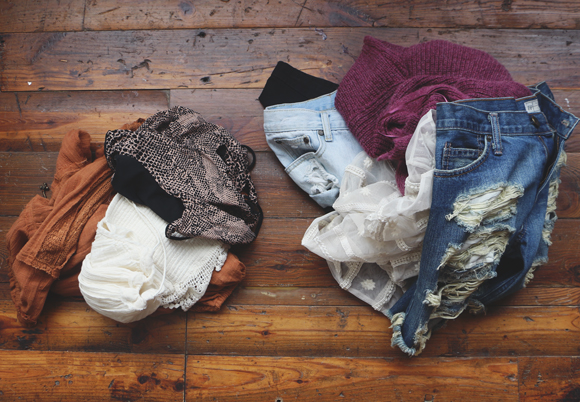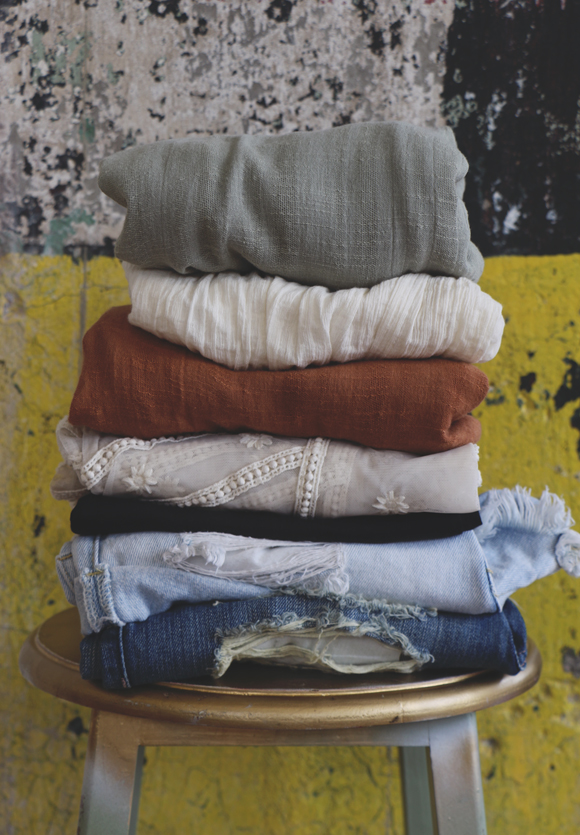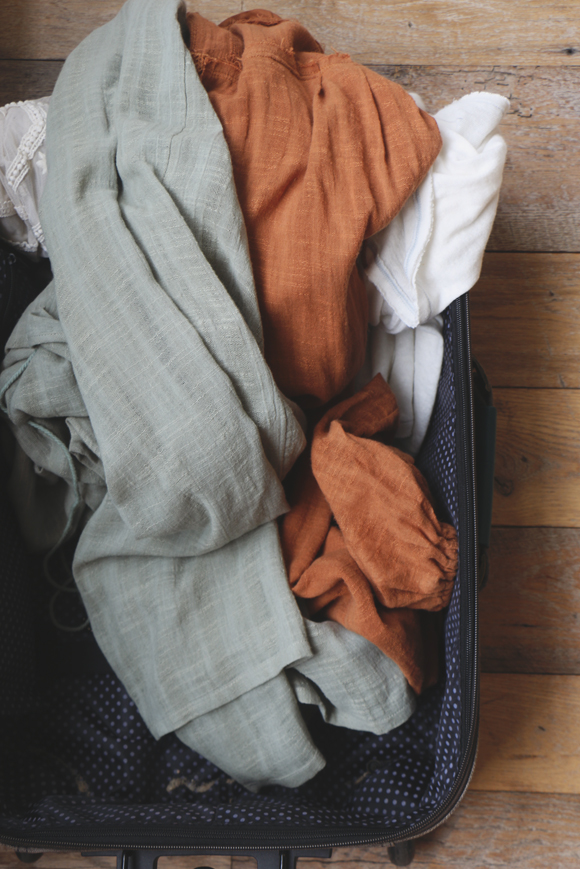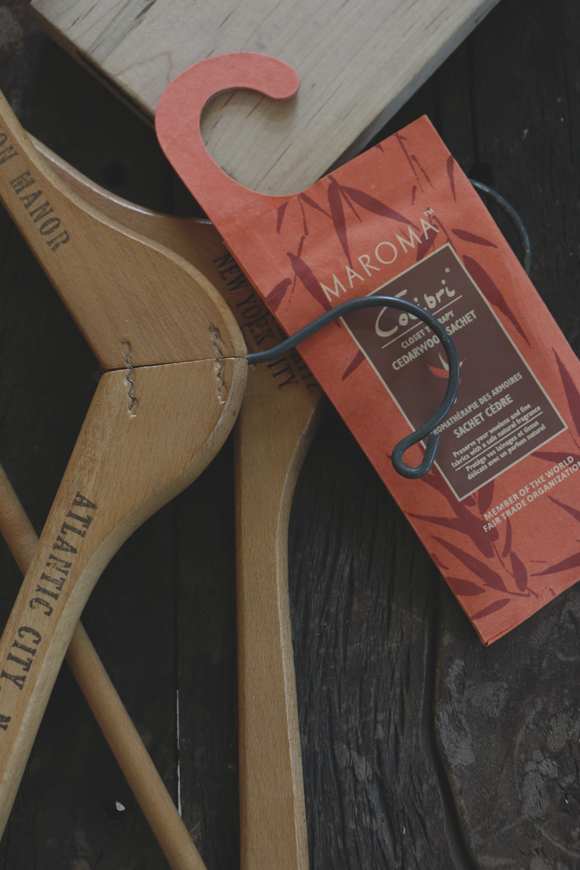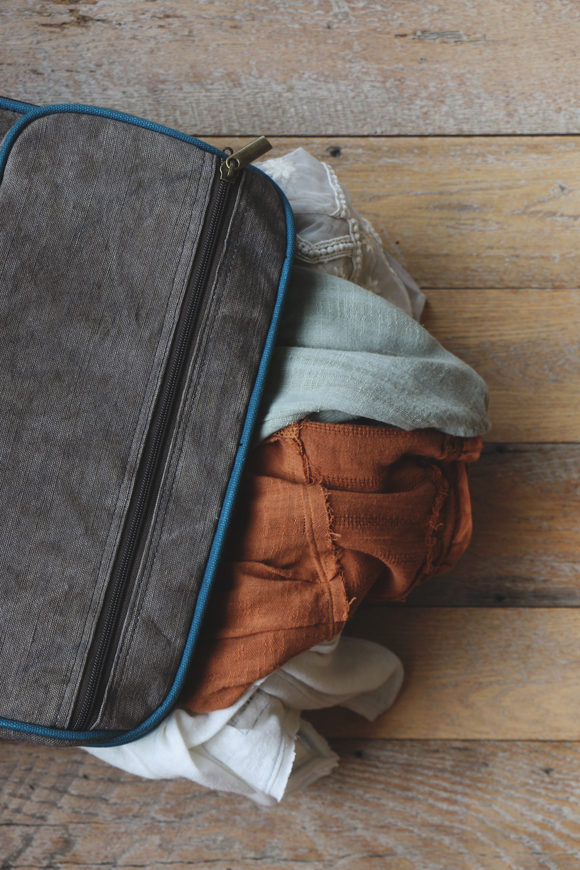How To Properly Store Your Summer Clothes
How To Properly Store Your Summer Clothes
I have dreams of one day having a Clueless-level closet. The size of a small trailer, I’d showcase my clothes from all seasons and a computer system would tell me what to wear. Unfortunately I’m dealing with exactly the opposite.
My closet is roughly the size of a gym locker. Tough break. So instead of keeping all of my clothes out in the open and readily available, I pack them away by season. I may not have my entire wardrobe right in front of me, but when a new season rolls around, pieces long forgotten suddenly feel fresh. Plus, I find the act of getting dressed is far easier when I don’t have to wade through racks of off season garments to find what I’m looking for. Less clutter equals a quieter, calmer mind and a more streamlined morning routine.
The first day of fall is nearly here, and soon we’ll be trading our swim suits and sundresses for warm coats and cozy sweaters. But packing away our delicate summer pieces is more complicated than just tossing them into storage bins and shoving them under the bed. Take the time to properly care for your clothes before storing them and they’ll be far more likely to last you for years to come, you’ll also be less likely to have to deal with nasty pests like moths, which can eat holes through sweaters and other fabrics.
Shown above: The Lou Lou Babydoll and the Bonnie Dress are two pieces that can seamlessly transition from summer to fall.
Sort
Fall is a transitional season, meaning that you may not want to pack all of your summer clothes away just yet, and you may not be ready to take all of your cold-weather garments out of their boxes, either. Sort through your loose clothes first to decide what stays or goes, keeping items that will transition into the new season in their place (think: denim cut-offs, tee-shirts, a few summer dresses, Birkenstocks). Then, create a “to be packed” pile with everything that you can pack away. You may want to take this opportunity to remove everything from your closet and give it a good sweep and vacuum to remove dust and dirt.
This is also a great time to create a “to donate” pile. Toss in any pieces that are ripped or torn that you don’t plan to mend (be honest with yourself), anything that doesn’t fit properly, trend pieces that you’ve fallen out of love with, unworn items, and clothes that don’t make you feel amazing. As you go through the motions of packing and unpacking, keep adding to the donation pile and when you’re done, bag it up and drop everything off at your nearest donation center.
Wash
Before you pack those seasonal clothes away, it’s vital to wash everything. Not only does this keep clothes smelling and looking fresh (grime left on clothes can settle in over time and leave permanent stains), but washing everything prevents moths and other pests from taking up residence.
Sort out the hand-wash only and dry clean only items before throwing everything else in the laundry, and care for the remaining pieces according to the tag directions. Some dry clean only-tagged clothing — like cashmere and silk — can actually be hand washed, just search online for instructions. To clean swimsuits, hand wash with a mild detergent and allow to drip dry completely. Store your suit in a small fabric garment bag.
Cleaning your wardrobe goes for shoes too. Before storing sandals and other footwear, wipe them down with a damp sponge to remove any dirt and debris. Condition and clean leather shoes with leather-specific products, and store footwear in breathable shoe bags.
Fold
After everything has been washed and dried thoroughly, fold it up and stack items from heaviest to lightest. To keep fabrics from creasing, you can tuck sheets of acid-free tissue paper between the folds.
Box
You have a number of options when it comes to the containers you choose to store your clothes in, but the one material that you should try to avoid whenever possible is cardboard, which can attract moths and pests. Personally, I’m a fan of durable plastic containers. They’re reusable, fit beneath my bed, and I’m able to easily see the clothes within — just in case I’m suddenly inspired to wear a specific piece that I may have hastily packed away. You can also use an old suitcase or cedar chest, depending on what works for your space.
Whatever you choose to use, be sure to clean and dry the interior to remove any dirt or bugs before packing your clothes into it. Once you’ve done so, place your folded clothes inside the container, being sure not to pack them in too tightly. You want air to be able to circulate easily around your garments.
If you must hang a garment, use a thick hanger to avoid indenting the shoulders and wrap the piece in a clean cotton sheet to protect it.
Protect
To protect your clothes from heat, light, and — you guessed it — moths, throughout the length of their storage, place a sheet of acid-free tissue over the top of your stacked clothes. You can further fend off pests by placing a few cedar blocks or a cedar sachet on top of the tissue before sealing the container, just make sure that the blocks or sachet don’t come into contact with your clothes.
Store
Always store clothes in a cool, dark place away from any direct light or heat. Many storage facilities offer clothing storage options, but I prefer to keep everything in my home, since I’m apt to go hunting for an item I’ve packed away. Dark closets and beneath your bed are great options when it comes to where to stash your storage boxes.
How are you transitioning your wardrobe for fall? Let us know in the comments!
More inspiring decor inspiration from the BLDG 25 blog.

